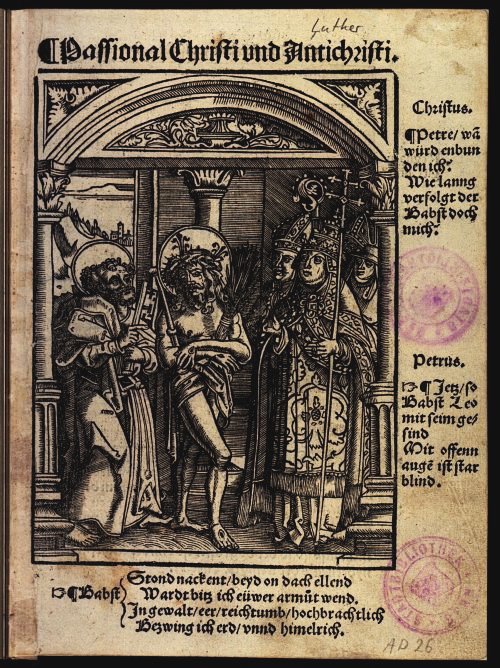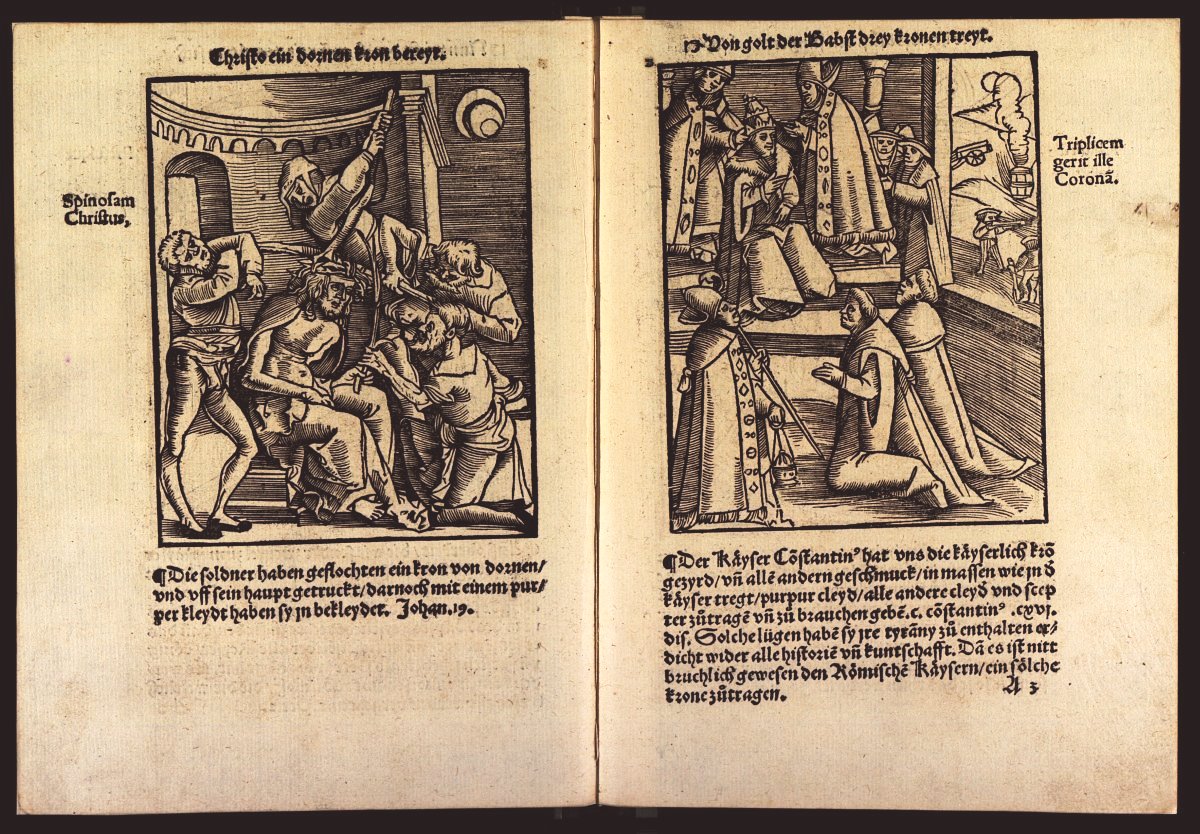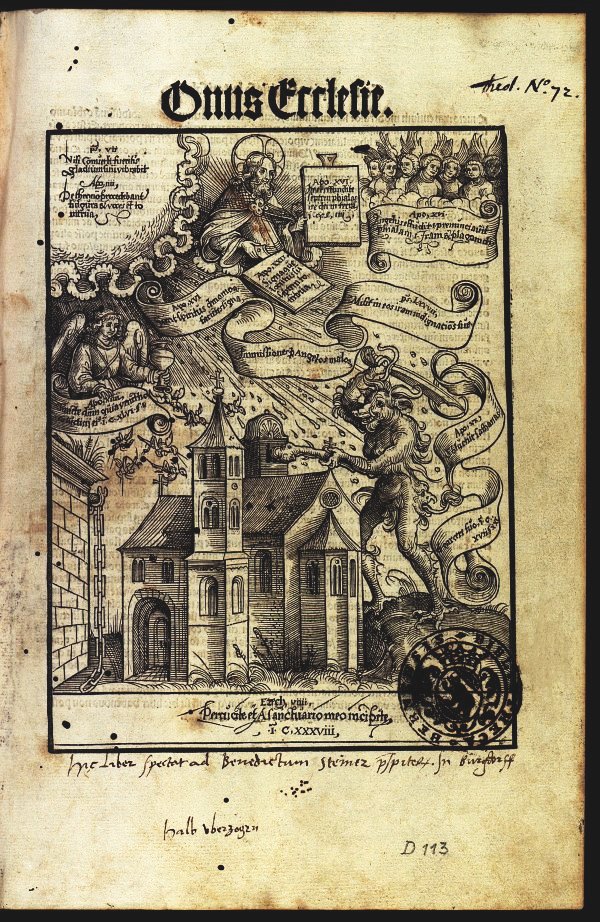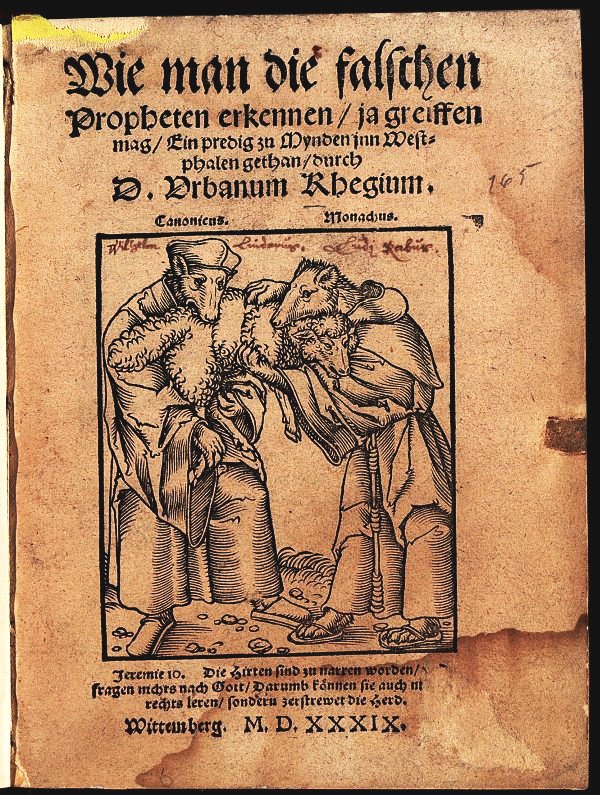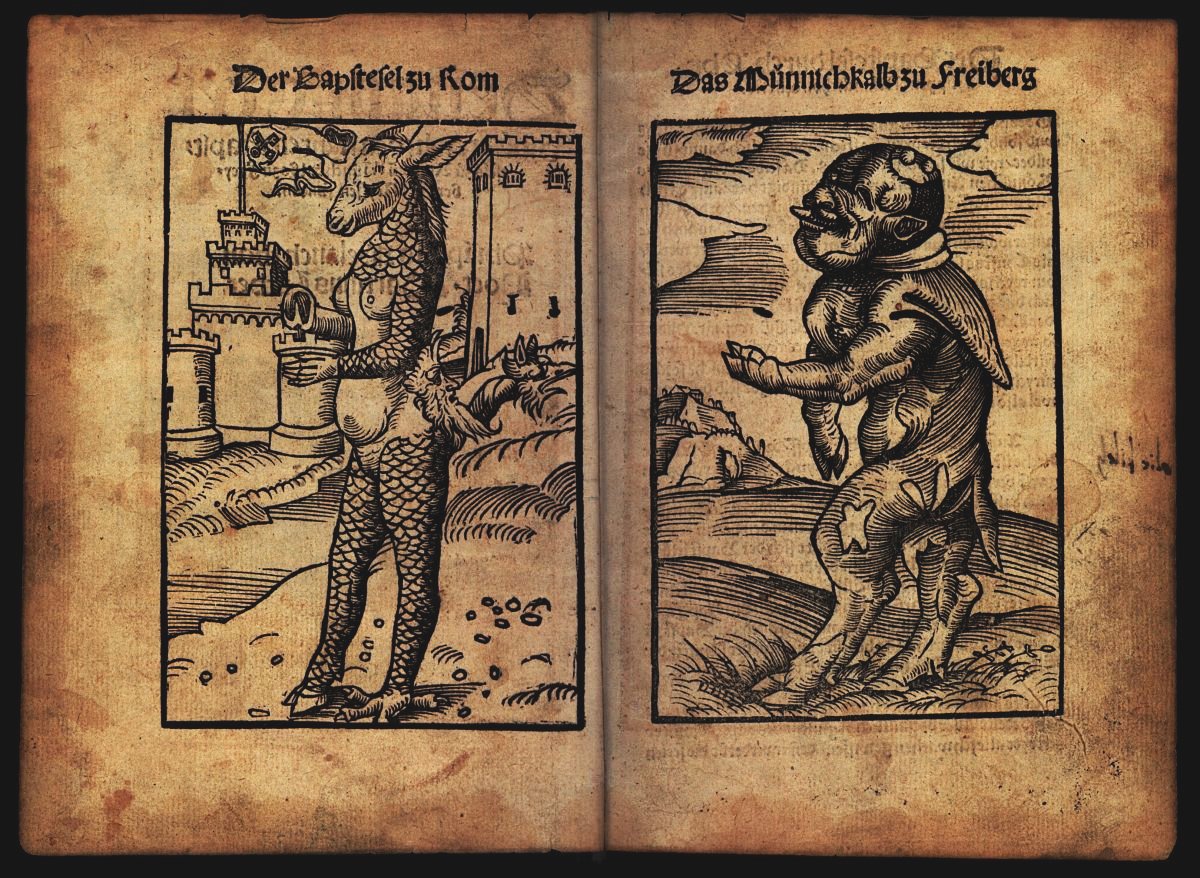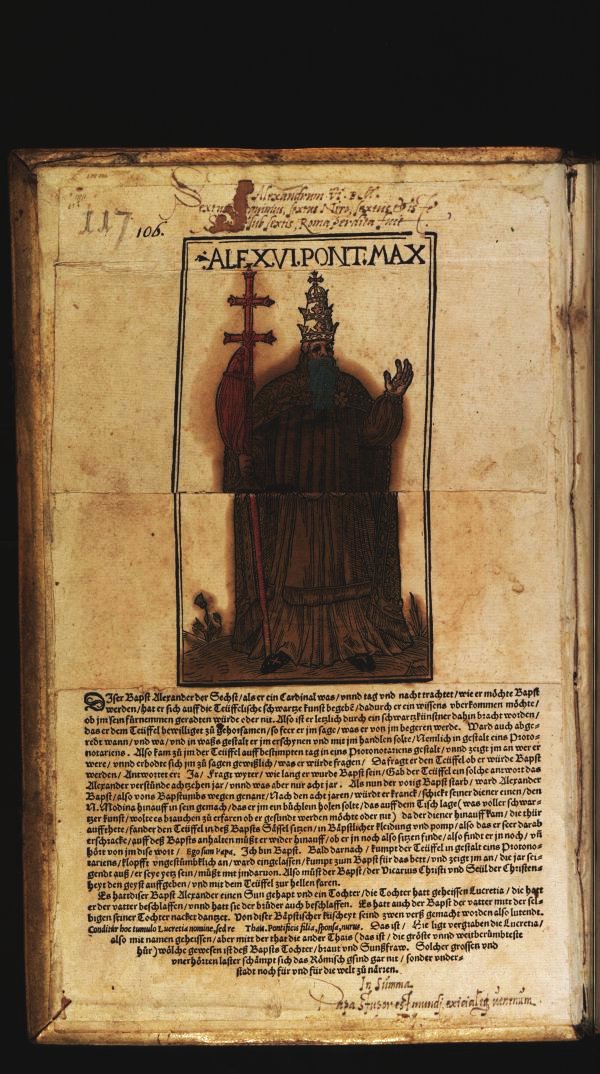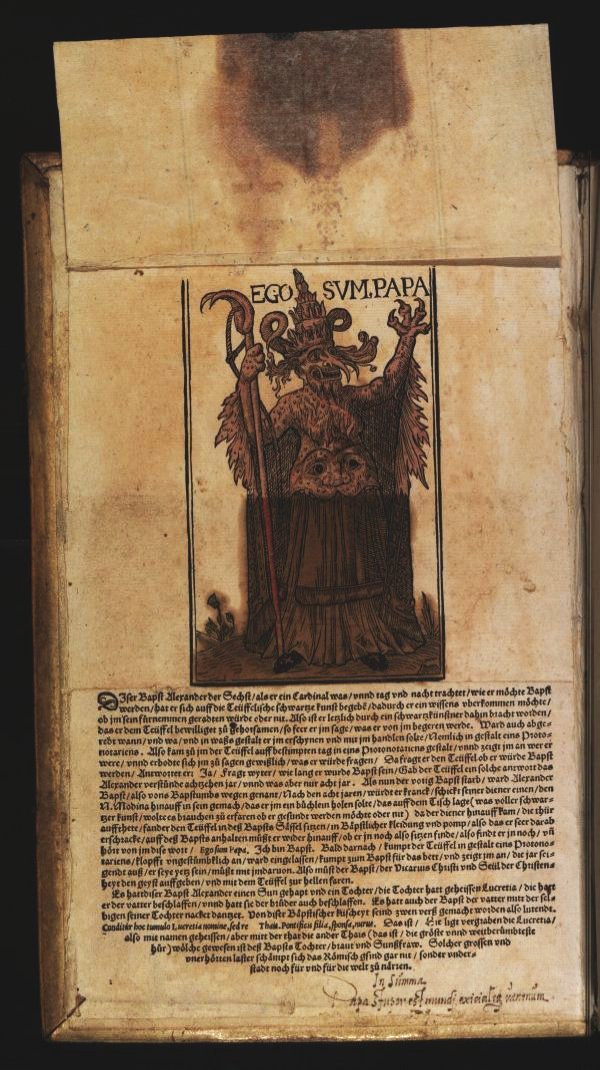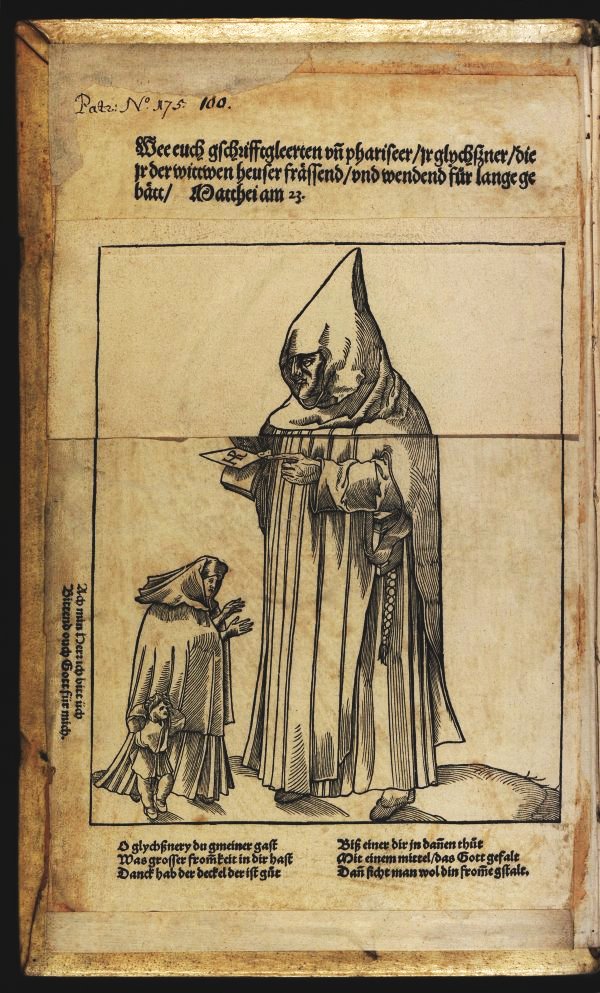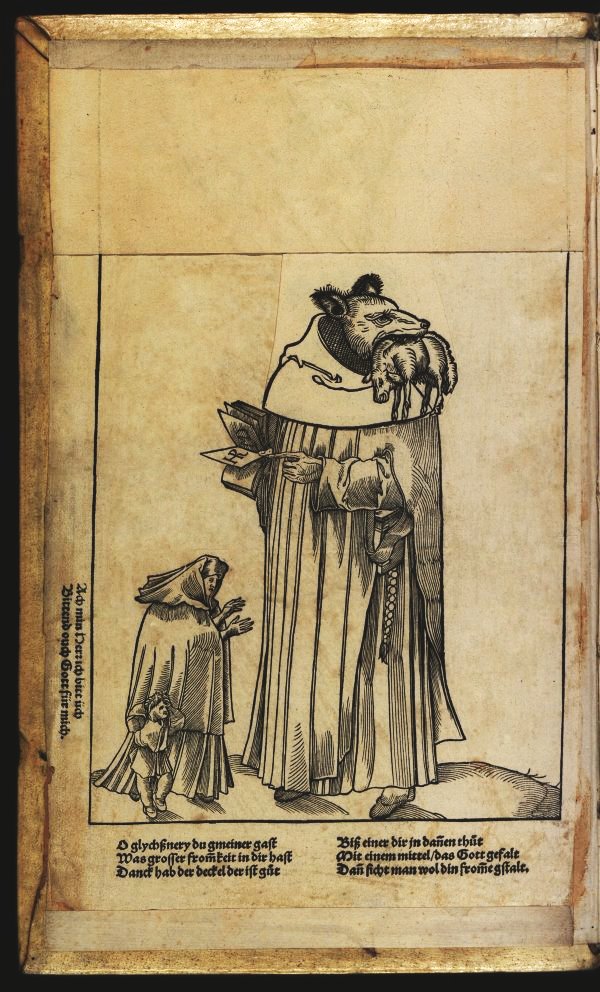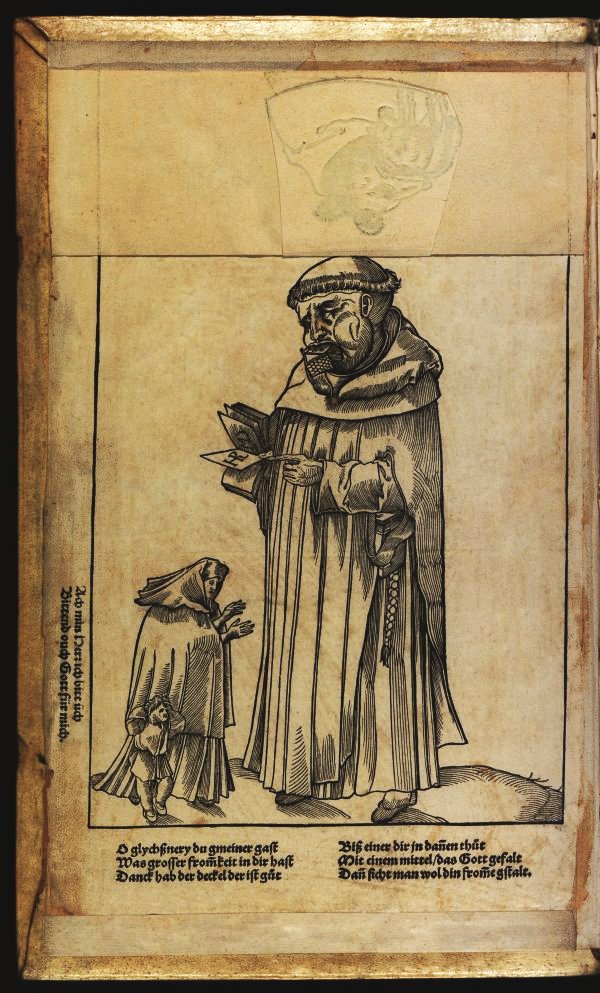Polemic caricatures
Just as in speech and writing the adversaries in faith did not spare each other in illustrations. They accused each other of destroying the Church and dissuading the faithful from the right path. With the intention of mocking the adversaries with pieces of invective and warning of their dangerous nature, they were not deterred from drastic scenes either. Equation with the antichrist in the form of the devil was a frequently used motive.
In this early pamphlet attacking the Pope and the clergy two images are always compared to Christ as model of humility and the Pope's haughty "unchristian" lifestyle. The selections of the scripture were provided by Luther's companion and friend from Wittenberg, Philipp Melanchthon. The illustrations in the present Strasbourg edition are recreated from the original Wittenberg prints by Lucas Cranach the Elder.
A self-critical analysis of the ecclesiastical conditions (MUE Gross D 113; Onus ecclesiae = "Burden of the Church" (German: Schwierige Aufgabe der Kirche)) written by Berthold Pürstinger, Bishop of Chiemsee, already in 1519 was anonymously printed in 1524. On the title page Antichrist, as described in the Revelation of John, wants to crush the Church, but is ultimately prevented from doing so by Christ.
In his sermon reformator Urbanus Rhegius aimed a statement from the 'Sermon on the Mount' at deceptive clergy (MUE AD 357). The woodcarving on the title page depicts this as illustration. Instead of taking care of the faithful (flock of sheep), the clergymen (shepherds), a canonist recognizable by the square-cap, the biretta, and a Franciscan monk with a rope as a belt with three knots standing for the vows poverty, chastity and obedience, greedily share their prey like rapacious wolves.
At that time when deformed animals were regarded as divine signs, even these were used to mock unbeloved church officials as "Papstesel“ (pope's donkey) und "Mönchskalb“ (monk's calf). No sooner had the papers written by Philipp Melanchthon and Martin Luther been published in Wittenberg in 1523, they were reprinted in Augsburg. The two corresponding images are carved very similarly to those in the original edition by Lucas Cranach d. Ä.
An anonymous pamphlet issued around 1540 (MUE Hospinian 44) shows the notorious Pope (Rodrigo Borgia, 1431–1503, Pope from 1492) in his regalia. When opening a paper flap in the upper part, the antichrist emerges with the heading "Ego sum papa" (I am the pope), whereby the papal insignia become satanical instruments. In the text below the Pope is described as being in league with the devil and tainted with evil vices.
Hans Rudolf Manuel, a son of the well-known Bernese painter, illustrator, writer and reformer Niklaus Manuel, designed this clerically and socially critical pamphlet (MUE Aretius 2a). By opening two flaps, the true character of the duplicitous monk is unmasked. Symbolically, as a spiritual shepherd he was supposed to guard his sheep of flock. Turning the first flap, the head of a monk appears instead of a wolf which is carrying a hunted sheep in its mouth.
And under the pretext of praying to God for salvation of the poor widow he demands her possessions. Beneath the second flap the monk shows himself again with a human face and tonsure, whereas meanwhile he is imbibing her house.

